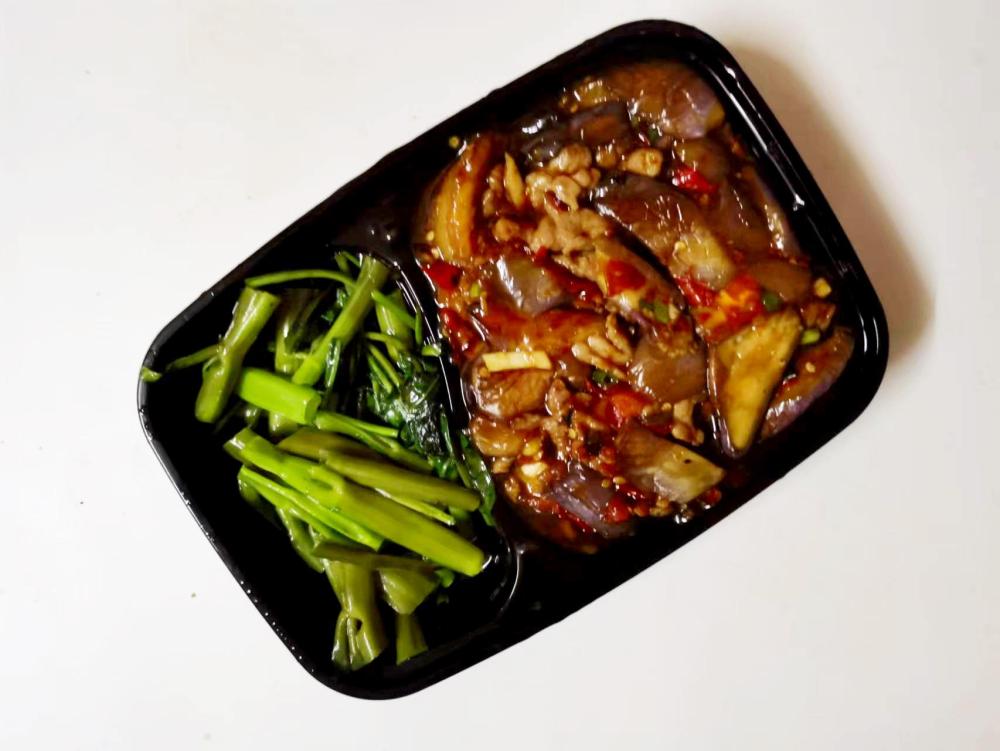Before coming to China in 1996, I had never thought of aubergine / eggplant / brinjal as being associated with Chinese cuisine. How wrong I was. 30 years ago Sichuan cuisine was almost unknown in western ‘Chinese’ restaurants. So, famous dishes such as 鱼香茄子 (yú xiāng qié zi), or 茄子肉末 (qié zi ròu mò) were unknown. That has changed.
Tonight I went for the latter, 茄子肉末 (qié zi ròu mò), Aubergine / Eggplant with minced pork. This common Sichuan dish is stir-fried with 豆瓣酱 (dòu bàn jiàng), known in America as Toban sauce, or similar. You may see the two parts of the Chinese name, 茄子 (qié zi), eggplant and 肉末 (ròu mò), reversed to become 肉末茄子 (ròu mò qié zi). In restaurants in China, the predominant ingredient is listed first; some restaurants have both on their menu. I go with the eggplant first variety, the most traditional.
This was accompanied by 空心菜 (kōng xīn cài, literally ‘hollow heart vegetable’), water spinach / Kangcong / ong choy/ morning glory etc. Another multiple-named ingredient (in both English and Chinese!)
Served with rice. That dish is deep, and I couldn't finish it, so I have leftovers for tomorrow' s lunch. Bonus.
¥22.60 / $3.11 USD inc delivery.





